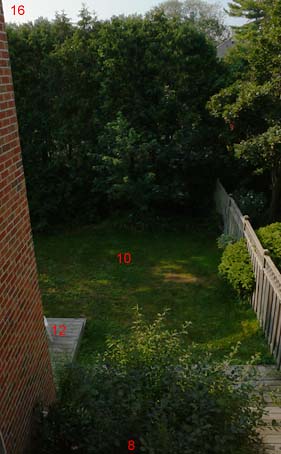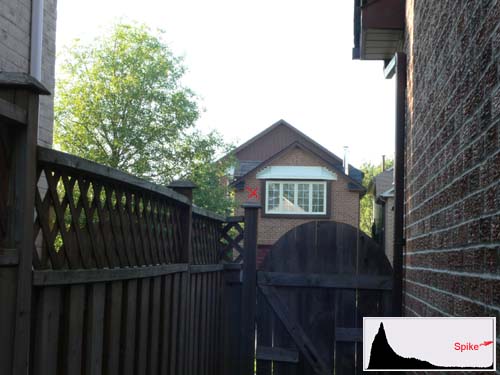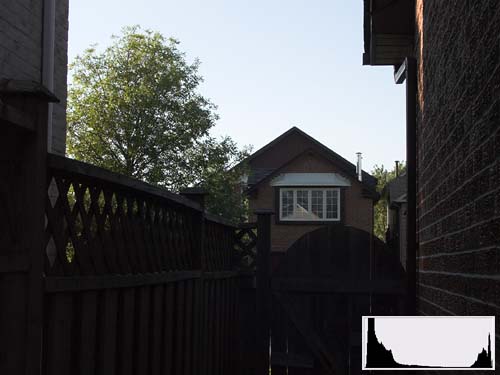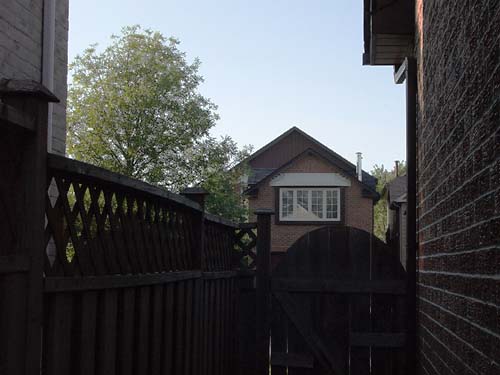Quick, Accurate High Contrast Exposures
for Digital Cameras
Page 1. Version 1.3, ©2006 by Dale Cotton, all rights reserved.
Note: this tutorial requires a digital camera with spot-metering plus aperture priority or manual mode. It also requires the willingness to stoop to some rudimentary post-processing. You can safely ignore this tutorial if your camera has 10 or 15 stops of latitude and/or telepathic multi-metering.
The problem

Fig. 1: Typical high contrast scene. Exposure values in red.
High contrast, or contrasty, light is most often found after dawn and before twilight on a sunny day with both sky and shadow areas in the same frame, as in Fig. 1. High contrast can also occur in other circumstances, such as shooting indoors with a daylit window in the frame. Ultimately, any shot in which your camera wants to turn non-white areas to pure white (Fig. 2) and/or shadow areas to inky black (Fig. 3) is high contrast.
The novice or casual photographer puts the camera in full automatic mode and is happy to get any shot in which the subject is recognizable. A smaller number of camera users get bit by the photography bug, then gradually develop a sense of what a competent photograph should look like. One quickly learns first that one of the biggest no-nos in photography is the blown highlight and second that it can be one of the trickiest problems to avoid.

Fig. 2: Blown Exposure using multi-metering. Red X marks focal point.
It's hard to find a recent model camera that doesn't have pattern/multi metering. I have yet to use one that can't be easily tricked into massively blowing highlights in contrasty light, as happened in Fig. 2. The problem that camera engineers face is that the overriding goal for metering has to be that the "subject" has to be "properly" exposed. But what is the subject of Fig. 2 and how would you write software that can examine the several million RGB numbers contained in a typical image, then reliably make that determination? In general, the answer that camera engineers fall back on is that whatever the auto-focus area is pointing at is the "subject"; and proper exposure means assigning the subject a middle tone.
In Fig. 2 I focused on the brick house across the street; specifically, on the bricks just left of the white window, marked with a red X. So the brick facade of that house is happily well-exposed - meaning assigned a middle tonality - while the entire sky has just as happily been pushed to pure white. Digital cameras typically have between 7.5 and 8.5 stops latitude (DR); a scene like this can have anywhere upwards of 9 stops latitude; and the JPEG engine in most digital cameras usually grabs the 6 stops safely above the noise floor.
Now here's what the same scene "should" look like out of the camera:

Fig. 3: Manual exposure
I say it "should" look like this, even though everything but the sky is too dark, only because this is the brightest overall exposure that doesn't blow the sky. I can easily apply an S-curve to Fig. 3 to darken sky and brighten non-sky portions of the scene:

Fig. 4: Manual exposure + elementary post-processing
... but I have no such option for recovering the blown sky in Fig. 2.